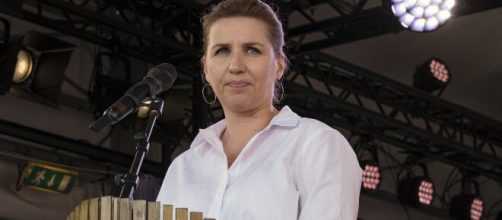Denmark has held another election to determine members of the Folketing, the country's Parliament. Under Danish law, an election did not technically have to be held until the following year. But, not altogether unusual, an early election was called for.
Prime Minister Mette Frederiksen, leader of the Social Democrats, helmed the so-called 'red bloc' going into the election. While Venstre ('Left) leader Jakob Ellemann-Jensen led the way for the opposing 'blue bloc.' The colorful bloc terms have been the traditional monikers for the different alliances of Parliamentary political parties.
A wrinkle in this election would be the Moderates—former Prime Minister Lars Lokke Rasmussen created a new centrist political party.
Frederiksen, Rasmussen expected to lead a new governing coalition
The Social Democrats have by far secured the largest share of seats in the Folketing. Though not enough for an outright majority. Governing by the coalition is the standard operating procedure for Danish federal politics. Following returns from the Danish territories of Greenland and the Faroe Islands, the red bloc seems poised to keep control.
Mette Frederiksen didn't even really campaign to attain a majority. Instead, as indicated by Reuters, she promoted forming a sweeping coalition spanning across ideologies.
Frederiksen, prime minister since 2019, could have a tailor-made partner in a former top rival.
Lars Lokke Rasmussen was the longtime leader of Venstre. Along the way serving as both prime minister and as leader of the Opposition two times over. In the 2019 election, Frederiksen's bloc toppled Rasmussen's government. Even though Venstre did well as a party, support for two of its blue bloc allies collapsed. As such, the red bloc formed the new government. Shortly after, he resigned as party leader, later leaving it altogether.
In 2021, Rasmussen launched his new, separate political party. One specifically designed to gear toward centrist policies. He criticized the state of the parties making up the Folketing blocs.
Saying that the blue is "tormented by value politics," while the red is "stuck in a past view of individual and state." It became apparent during the campaign that the former PM and his Moderates would be essential in the new government. Politico has called him "indispensable for coalition talks." The Moderates have tallied the third-most seats in the 2022 election. Should negotiations end with the expected results, Rasmussen will likely have a significant role in Frederiksen's Cabinet.
It could be drama from other bloc partners
There may still be trouble ahead for a potential government led by Mette Frederiksen and Lars Lokke Rasmussen. At least some of the Social Democrats' fellow red bloc members haven't seemed so interested in compromising.
While Danish voters seem eager for centrism, some parties still push for policies further to the left.
An exception to this could be the Danish Social Liberal Party. The party embraced a platform that included reaching beyond the traditional bloc lines. However, the party also had a disappointing result in the 2022 election, which could, in turn, severely dampen its influence in a subsequent government formation.
Meanwhile, things don't seem much, if at all, smoother on the blue side of things. Venstre and its historic partner, the Danish People's Party, each had one of the worst election results in their histories. Another new party, the Denmark Democrats, has also shaken things up. The party, regarded as right-wing, saw a surge of support from voters. Several already-sitting Parliamentary members also left their previous parties to join the new one.


